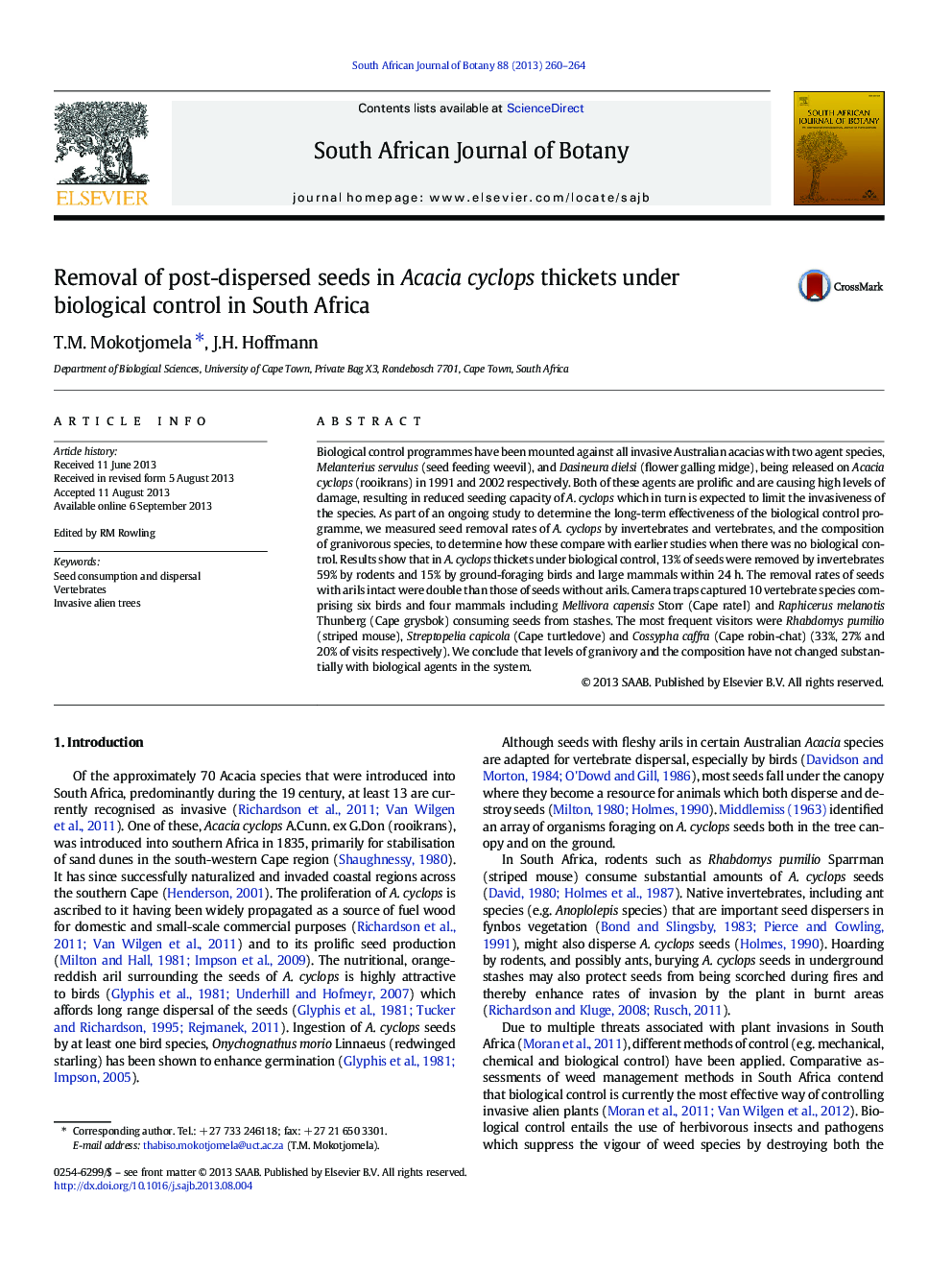| کد مقاله | کد نشریه | سال انتشار | مقاله انگلیسی | نسخه تمام متن |
|---|---|---|---|---|
| 6379110 | 1625170 | 2013 | 5 صفحه PDF | دانلود رایگان |
- Melanterius servulus and Dasineura dielsi used to reduce seed abundance in A. cyclops.
- Interaction between biocontrol effect on A. cyclops fecundity & seed consumption by indigenous organisms
- No substantial change in granivory levels prior biocontrol vs. 20Â years after, and composition of granivorous species
Biological control programmes have been mounted against all invasive Australian acacias with two agent species, Melanterius servulus (seed feeding weevil), and Dasineura dielsi (flower galling midge), being released on Acacia cyclops (rooikrans) in 1991 and 2002 respectively. Both of these agents are prolific and are causing high levels of damage, resulting in reduced seeding capacity of A. cyclops which in turn is expected to limit the invasiveness of the species. As part of an ongoing study to determine the long-term effectiveness of the biological control programme, we measured seed removal rates of A. cyclops by invertebrates and vertebrates, and the composition of granivorous species, to determine how these compare with earlier studies when there was no biological control. Results show that in A. cyclops thickets under biological control, 13% of seeds were removed by invertebrates 59% by rodents and 15% by ground-foraging birds and large mammals within 24Â h. The removal rates of seeds with arils intact were double than those of seeds without arils. Camera traps captured 10 vertebrate species comprising six birds and four mammals including Mellivora capensis Storr (Cape ratel) and Raphicerus melanotis Thunberg (Cape grysbok) consuming seeds from stashes. The most frequent visitors were Rhabdomys pumilio (striped mouse), Streptopelia capicola (Cape turtledove) and Cossypha caffra (Cape robin-chat) (33%, 27% and 20% of visits respectively). We conclude that levels of granivory and the composition have not changed substantially with biological agents in the system.
Journal: South African Journal of Botany - Volume 88, September 2013, Pages 260-264
